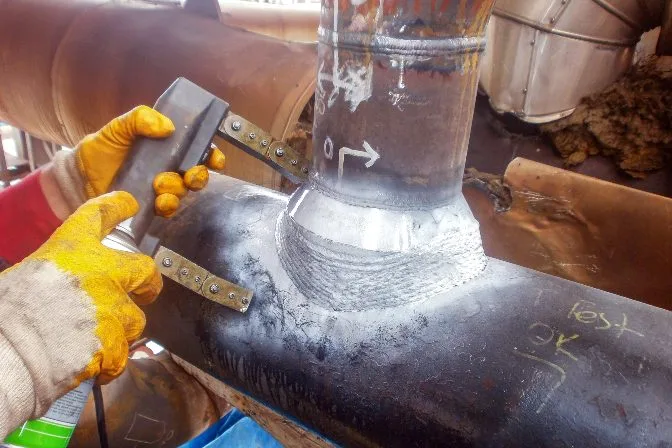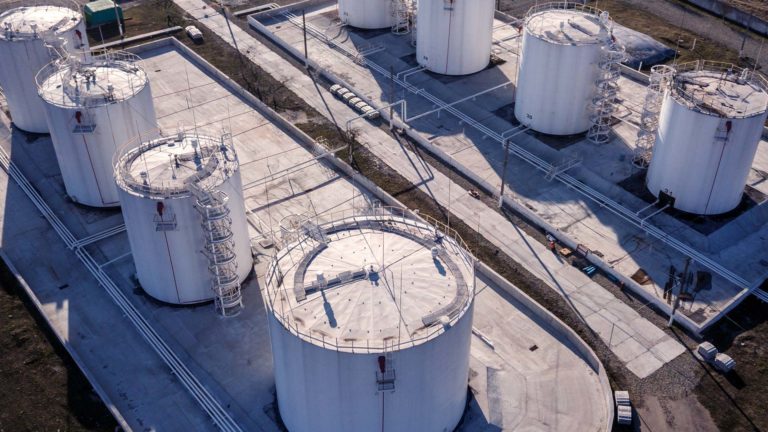The Essential Duty of Container Welding Examination in Ensuring Structural Honesty and Security Compliance in Industrial Applications
In the world of industrial applications, container welding inspection emerges as an essential component in safeguarding structural stability and making certain compliance with security regulations. Using a combination of methods such as aesthetic evaluations and progressed testing techniques, these examinations serve to identify and alleviate potential imperfections prior to they intensify right into significant dangers.
Significance of Storage Tank Welding Examination

Making sure conformity with sector criteria and laws is an additional considerable aspect of tank welding evaluation. Regulative bodies mandate stringent standards for the building and maintenance of storage containers, and detailed assessments help organizations abide by these requirements. Non-compliance can result in severe fines, including penalties and closures, better stressing the demand for strenuous examination methods.
In addition, storage tank welding evaluation plays a crucial duty in preserving functional effectiveness. In recap, the relevance of tank welding assessment lies in its capacity to protect public wellness, secure the environment, and make sure compliance with regulatory frameworks.
Trick Examination Methods
Effective storage tank welding examination relies upon a selection of key techniques that guarantee thorough assessment of weld top quality and architectural stability. Amongst one of the most common methods are aesthetic assessment, ultrasonic screening, radiographic testing, and magnetic fragment screening - Tank Welding Inspection. Each technique provides distinct advantages in assessing different elements of the weld
Aesthetic examination serves as the first line of defense, allowing inspectors to recognize surface area flaws, abnormalities, or inconsistencies in the weld bead. Ultrasonic testing utilizes high-frequency sound waves to find inner defects, such as cracks or gaps, giving a thorough analysis of weld honesty. This approach is specifically effective in spotting concerns that may not be visible on the surface.
Radiographic testing utilizes X-rays or gamma rays to produce images of the welds, revealing internal suspensions and offering a long-term record for future referral. This strategy is very reliable for critical applications where the threat of failure must be minimized.
Finally, magnetic particle testing is employed to identify surface area and near-surface issues in ferromagnetic products. By applying electromagnetic fields and fine iron bits, inspectors can identify suspensions that might jeopardize the structural stability of the tank. Together, these methods form a robust structure for guaranteeing top quality welds in industrial applications.
Conformity With Security Criteria

Regular assessments play a critical duty in making sure compliance by identifying prospective failures or inconsistencies from recommended criteria. Examiners are educated to assess weld top quality, confirm product specs, and examine the general architectural honesty of tanks. Their experience is crucial in making certain that welding processes fulfill the required safety criteria.
Furthermore, compliance with security standards not just protects workers yet likewise safeguards the environment from potential hazards such as leakages or tragic failings. Organizations that focus on security compliance are much better placed to alleviate dangers, enhance operational performance, and cultivate a culture of safety within their labor force. In summary, keeping extensive compliance with safety and security criteria is vital for the successful operation of storage tank welding activities in commercial settings.
Advantages of Regular Inspections
Regular examinations are essential to keeping the structural honesty and safety and security of welded containers. These assessments offer an organized method to recognizing potential flaws or weaknesses in the welds, making certain that any type of issues are attended to before they rise into considerable failings. By carrying out routine assessments, companies can detect deterioration, fatigue, and various other kinds of wear and tear that might compromise storage tank performance.
Additionally, regular evaluations add to compliance with sector regulations and criteria. Adhering to these guidelines not just minimizes legal risks but additionally enhances the organization's credibility for security and dependability. Routine inspections promote an aggressive safety and security culture, motivating employees to recognize and prioritize the importance of equipment stability.

Case Studies and Real-World Applications
Instance research studies and real-world applications illustrate the concrete impact of efficient storage tank welding inspection methods. Following the implementation of strenuous welding assessment protocols, consisting of aesthetic and ultrasonic testing, the center identified vital defects in weld joints that might have led to catastrophic failings.
Likewise, a water therapy plant executed a thorough inspection program for its storage tank welding procedures - Tank Welding Inspection. By including non-destructive screening techniques, the plant was able to identify very early signs of rust and fatigue in weld joints. This prompt treatment extended the lifespan visit site of the containers and guaranteed conformity with safety guidelines, thus securing public health
These instance studies emphasize the importance of regular and systematic tank welding inspections. By prioritizing these methods, sectors can reduce dangers, enhance structural integrity, and make certain compliance with security criteria, ultimately resulting in boosted functional efficiency and decreased liabilities.

Final Thought
Finally, storage tank welding assessment is an indispensable component of keeping architectural honesty and safety and security in industrial applications. Utilizing various inspection techniques guarantees early detection of possible imperfections, therefore stopping catastrophic failings. Adherence to safety and security criteria better boosts functional dependability and compliance with regulatory requirements. Eventually, normal evaluations not just safeguard public health and wellness and the atmosphere click this link however likewise add to the longevity and efficiency of crucial assets, underscoring the crucial role of this technique in industrial procedures.